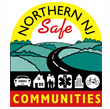Safety Library

At Home

On the Road

At Play
Common sense use of helmets in sports
When the weather starts getting warmer, many can't wait to shake the shackles of cabin fever and get outside. In all the excitement, it may be easy to forget about the importance of taking safety precautions during outdoor activities -- especially sports activities.
Be Prepared and Get Useful Tips
Winter driving can hazardous and scary, especially in northern regions that get a lot of snow and ice. Additional preparations can help make a trip safer, or help motorists deal with an emergency. This sheet provides safety tips for your residents to help prevent motor vehicle injuries due to winter storms.
Practice responsible sledding, safe environment and equipment
WHAT ARE THE INJURY FACTS FOR YOUTH WHEN SLEDDING?
- Injuries commonly occur in collisions with fixed objects (e.g. trees and fences) and other people
- Sledding in an area that is open to vehicular traffic significantly increases the risk of severe injury.
- The absence of adult supervision increases the risk of injury.
- Common injuries include head trauma, fractured bones, and contusions or abrasions.
Advice on the prevention and treatment of dehydration
National SAFE KIDS, Gatorade, and NATA Partner to Prevent Dehydration in Kids.
SAFE KIDS Northern New Jersey offers sports safety tips
Every year, more than 3.5 million children ages 14 and under suffer sports injuries serious enough to require medical treatment. Nearly half these injuries result from solo activities such as cycling, skating and skateboarding; however, roughly one out of four participants in youth soccer, football or baseball has been injured at least once, along with about 15 percent of kids playing basketball and 12 percent of kids playing softball.
KJ Feury RN APN, C
karenjean.feury@atlantichealth.org
Phone: 973-971-4327
Fax: 973-290-7350




